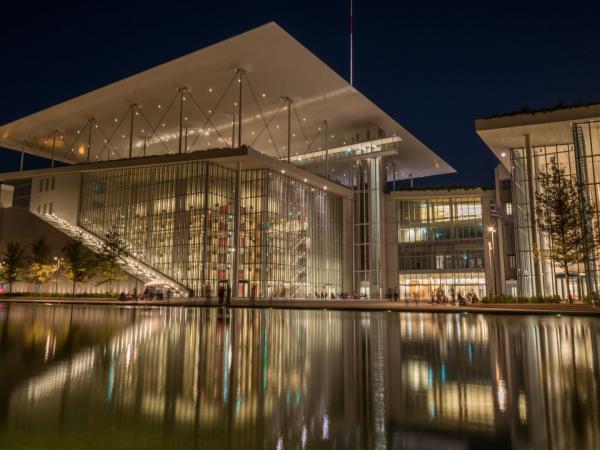Date: 3 April 2014
Part of the credit belongs to FLACHGLAS Wernberg, since the ca. 11.000 glass panes for the spectacular facade came from Wernberg-Koeblitz.Several times over the past years, though, it seemed like the ambitious plans for the area next to the train station London Bridge would fail.First the architectural design fell through, then all of the investors bailed out. It took until 2009 - almost six years after the building permit had been granted - for the construction to actually begin.
.jpg) London's new landmark cost about half a billion euros - for which the city gains a building in an inimitably distinctive shape. In the form of an extremely steep pyramid the tower building rises into the sky like a "vertical city", says architect Renzo Piano. Its name "The Shard" refers to the jagged looking steel and glass structure at the very top of the building.
London's new landmark cost about half a billion euros - for which the city gains a building in an inimitably distinctive shape. In the form of an extremely steep pyramid the tower building rises into the sky like a "vertical city", says architect Renzo Piano. Its name "The Shard" refers to the jagged looking steel and glass structure at the very top of the building.
It was the architect's declared aim to let the steel skeleton of the high-riser shine through the glass facade in the most impressive way possible. This presented our company with a completely new challenge with regard to the production of the glass modules. For the first time ever the insulating glass was manufactured with a grey edge bond that would be partially visible later on. Overall, the visual requirements by far exceeded those of other projects: maximum surface purity, an exact straight-line finish of the edge bond, minimal glass tolerances.
In the end, about 73.000 sqm of facade glass went on a journey to the Thames - that amounts a roughly 200 lorry loads.
One hears that the Londoners still have mixed feelings towards "The Shard". Maybe there just aren't many people working in the glass industry among the inhabitants of the British capital. Otherwise their hearts would leave them no choice but to turn their faces towards the sky with a very pleased smile.



Add new comment